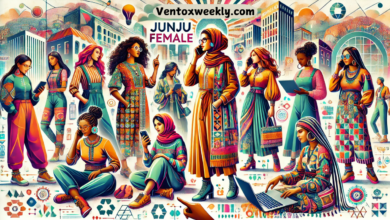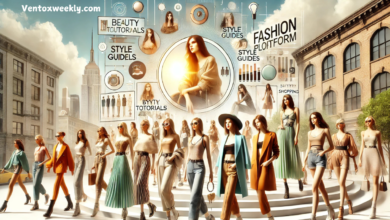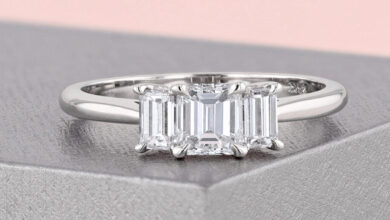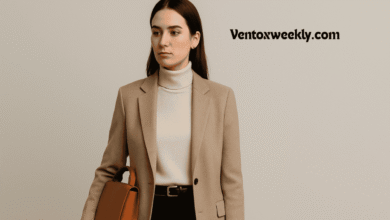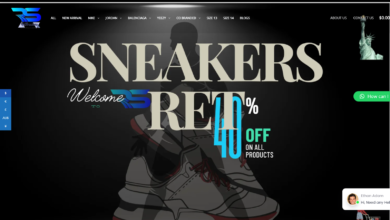Embracing Hijabhoojup: The Fusion of Tradition and Modern Style
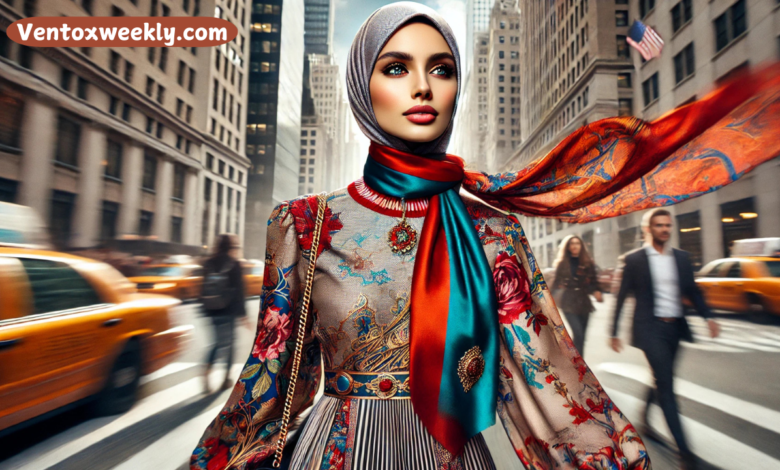
The global fashion landscape has witnessed a notable change in recent years toward diversity and inclusivity. One of the most significant movements within this space is the rise of hijabhoojup—a contemporary twist on traditional hijab wearing that blends modesty with modern fashion sensibilities. This piece examines the beginnings, cultural relevance, and global impact of hijabhoojup, highlighting how it has become a potent way to convey one’s identity and sense of style.
The Origins of Hijabhoojup
Beyond merely being a fashion statement, hijabhoojup is a cultural revolution that has transformed the traditional hijab into a symbol of modern modesty. The term blends “hijab,” the conventional headscarf worn by Muslim women, and a playful suffix that suggests a fresh, upbeat take on modest apparel. This new fashion trend goes beyond the traditional; it incorporates vibrant colors, bold patterns, and innovative designs that appeal to a global audience.
The Evolution of Modest Fashion
Traditionally, the hijab was seen as a symbol of modesty and privacy, primarily worn for religious reasons. However, with the advent of hijabhoojup, it has become a versatile fashion item. Designers have reimagined the hijab using a variety of fabrics and decorations that maintain its modesty while making it fashionable and functional for everyday wear.
Cultural Significance and Empowerment
Hijabhoojup represents a significant cultural shift. It challenges the stereotypes often associated with traditional hijabs and those who wear them by portraying the hijab as a choice that empowers women to showcase their style without compromising their beliefs. This movement has allowed Muslim women to express their identity and opened a dialogue on religious tolerance and cultural diversity.
Fashion Industry Impact
The fashion industry has noticed the rising popularity of hijabhoojup. High-end brands and mainstream fashion designers have started incorporating hijab-friendly pieces into their collections, seeing them as an untapped market with considerable demand. From luxury fashion houses to affordable retail brands, companies are expanding their lines to include hijabhoojup, which has helped to normalize modest attire in fashion circles that once favored more revealing outfits.
Role of Social Media
Social media has been instrumental in the hijabhoojup movement. Influencers wearing hijabhoojup have become style icons, sharing their daily outfits and styling tips on platforms like Instagram, TikTok, and YouTube. These influencers are crucial in shaping perceptions and making hijabhoojup a trendy choice for young women worldwide. Through hashtags and social media campaigns, hijabhoojup has gained a global following, encouraging women of all backgrounds to embrace this new trend.
Global Influence and Acceptance
The appeal of hijabhoojup is not confined to any single region. It has crossed cultural and national boundaries, with women worldwide adopting this style. In Western countries, where the hijab might once have been met with misunderstanding or prejudice, hijabhoojup has started to change perceptions, showing that modest fashion can also be vibrant, fashionable, and fully integrated into the global fashion scene.
Challenges and Controversies
Despite its popularity, the hijabhoojup movement faces challenges. Critics argue that while hijabhoojup promotes fashion freedom, it also risks commercializing a religious symbol. Additionally, in some parts of the world, women who wear hijab, including hijabhoojup, still face discrimination and social stigma. These issues highlight the ongoing struggle for acceptance and the complex interplay between fashion, culture, and religion.
Future Trends
Hijabhoojup will evolve further as designers experiment with new fabrics and styles. Technology and innovation in textiles could lead to even more variations that cater to comfort, style, and sustainability. Moreover, as global awareness and acceptance increase, hijabhoojup will continue to be a significant part of the conversation around fashion, identity, and empowerment.
Conclusion
Hijabhoojup is a testament to the power of fashion as a form of personal and cultural expression. It celebrates the rich diversity of global cultures while fostering a more inclusive fashion world. As hijabhoojup continues to grow in popularity, it will likely inspire more inclusive practices in the fashion industry, promoting a broader acceptance of what it means to be stylish in the modern world.
FAQs on Hijabhoojup
What is hijabhoojup?
Hijabhoojup is a contemporary fashion trend that reinterprets the traditional hijab, blending it with modern style elements. It incorporates vibrant colors, bold patterns, and innovative designs to create a fashion statement that respects modesty while reflecting modern aesthetics.
How did hijabhoojup originate?
The term hijabhoojup emerged from the desire to fuse traditional modesty with contemporary fashion trends. It reflects a shift in how the hijab is perceived and worn, evolving from a strictly conventional religious garment to a versatile element of personal style.
Who can wear hijabhoojup?
Hijabhoojup is primarily designed for Muslim women who wish to adhere to their cultural and religious norms of modesty while expressing their style. However, its universal appeal allows anyone interested in modest fashion to embrace it.
What makes hijabhoojup different from the traditional hijab?
Unlike the traditional hijab, which is often plain and worn strictly for modesty, hijabhoojup allows for more creative expression through fashion. It incorporates modern fashion elements like textures, patterns, and accessories, making it suitable for various occasions and styles.
Can hijabhoojup be worn for formal occasions?
Yes, hijabhoojup is versatile enough to be styled for both casual and formal settings. Designers have created hijabhoojups with luxurious fabrics and embellishments suitable for formal events.
